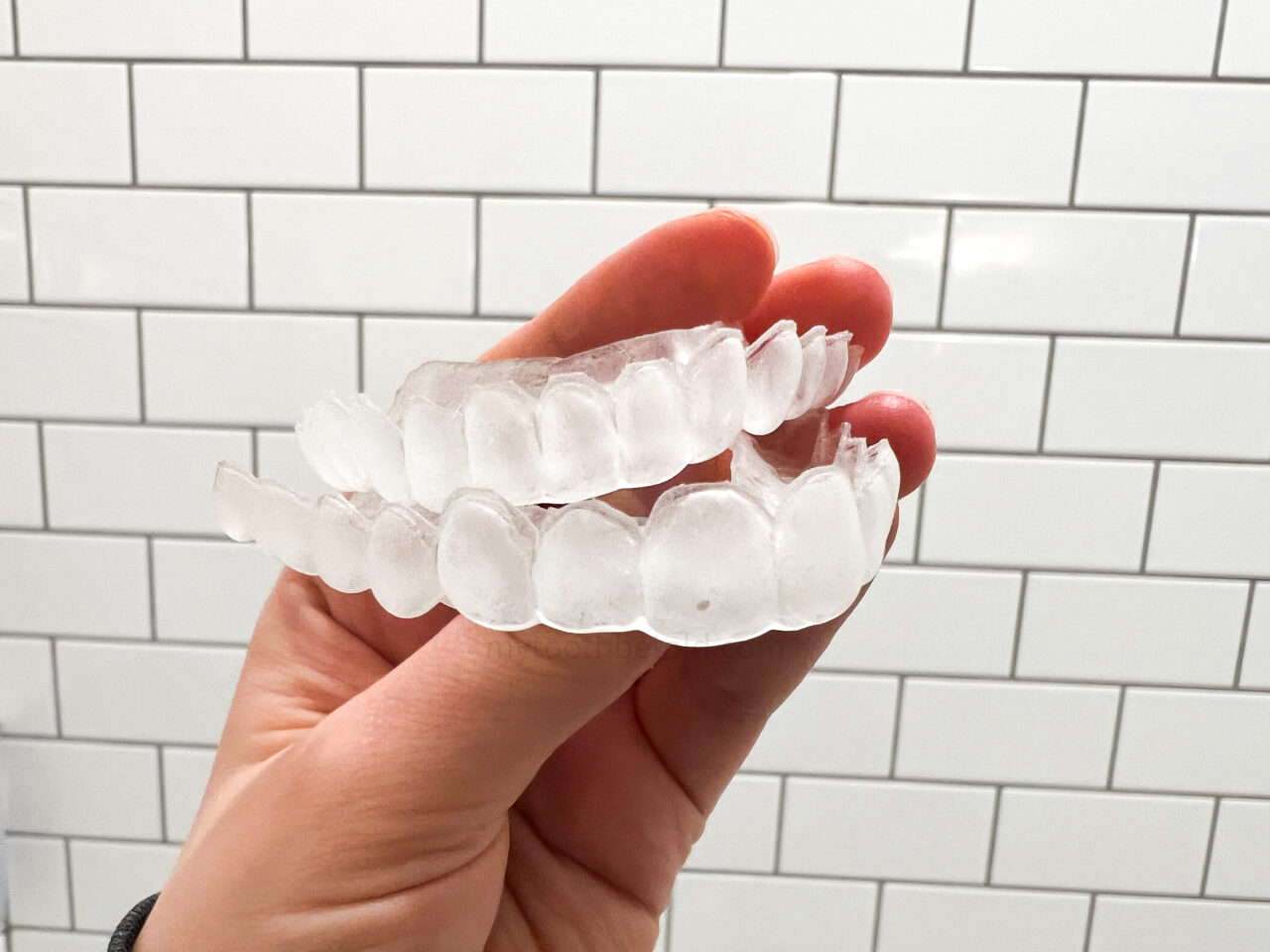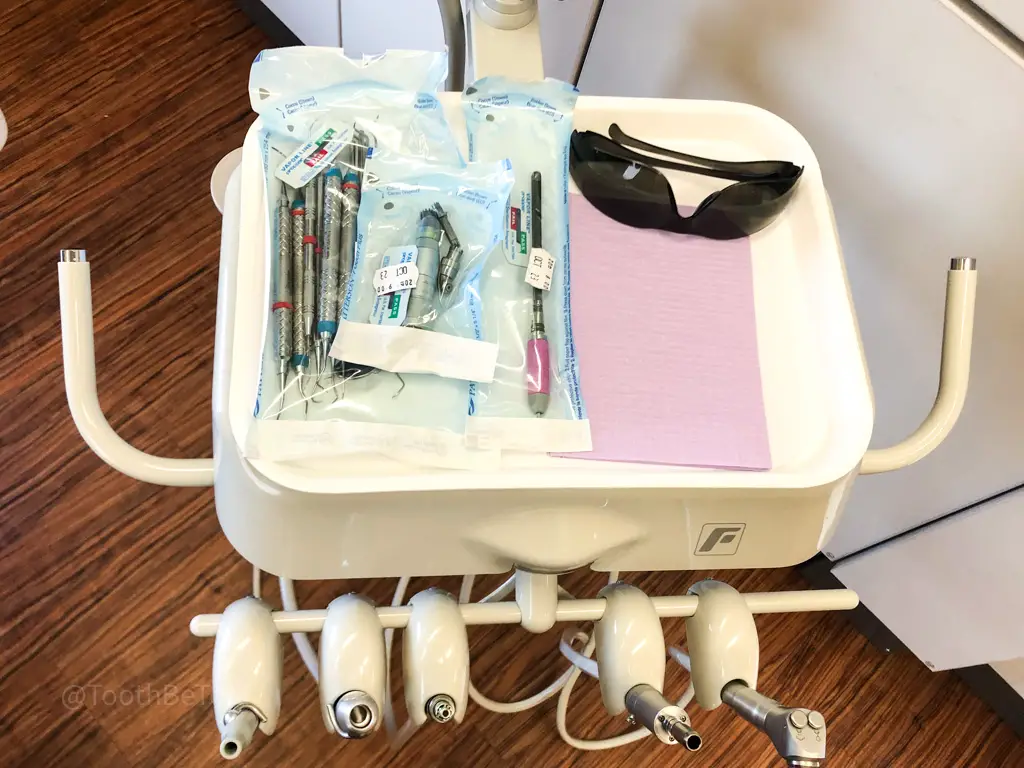Implementing eco-friendly practices in your dental office can significantly reduce waste and lower operating costs. As a dental hygienist of over ten years, I am passionate about sustainability; I’ve gathered practical and impactful ways to help your dental practice go greener.
To make your dental office greener, reduce single-use plastics, optimize energy and water consumption, recycle where possible, and promote sustainable practices within your team. These steps benefit the environment and enhance your practice’s efficiency and reputation.
Keep reading to explore detailed strategies for making your dental office more environmentally friendly, from daily operations to larger-scale changes.

How to Make Your Dental Office Greener
1. Autoclavable Items
Invest in reusable alternatives that can be sterilized in the autoclave, such as stainless steel cups, x-ray equipment/accessories and specific saliva evacuation tools that can be sterilized or reduce waste. These items can be cleaned and reused multiple times, significantly reducing plastic waste compared to their disposable counterparts.
In some areas, it is no longer acceptable to use metal air/water syringe tips. They are considered single-use items for infection prevention and control because debris can enter the syringe, making it difficult to clean and sterilize effectively. So, in short, only re-use and sterilize items that are IPAC compliant.
It is essential to follow the IPAC guidelines at the location where you are practicing.

2. Recyclable Dental Products
Many dental products, such as floss containers and dental aligners, are recyclable. Establish a recycling program in your office to ensure these items are appropriately processed and do not end up in landfills. Partner with recycling initiatives that specialize in dental materials to streamline this process.
My favourite and best program is TerraCycle. Although I am not affiliated with them, I genuinely believe in their mission.
You can get a waste box for disposable gloves, which is linked here: TerraCycle Disposable Gloves – Zero Waste Box™
You can also have an Oral Care Waste Box, which is linked here: Oral Care Waste and Packaging – Zero Waste Box™
What you can recycle in the Oral Care Waste Box;
- Dental Aligners
- Electric Toothbrush Heads which don’t contain an RFID Microchip
- Floss Containers
- Interdental Brushes
- Plastic Toothbrushes
- Toothpaste Caps
- Toothpaste Tubes
If you do not participate in TerraCycle, you should still have recycling in the office.
Ensure your using safe products for your teeth; Read Now: Adult Dental Resources
3. Reduce Packaging Waste and Excess Product
Buying in bulk can significantly reduce the amount of packaging waste generated. When ordering supplies, request vendors to condense shipments to minimize packaging. This not only reduces waste but also cuts down on the carbon footprint associated with transportation.
Some people will order just as they need it, but if you can create a better schedule and wait until you have multiple things you need to have shipped, it will reduce the waste and the associated travel costs with the delivery. The truck delivering the package needs gas to run, too!
As well, use products that come in bulk and products you only dispense what you need.
For example, single-use fluoride varnish packages. Plastic packaging is not the only thing going to waste; the amount of product dispensed in the package is excessive and promotes product overuse. The better option is to use alternatives, and some of the new products on the market have taken evidence-based practice to the next level.
I have seen dental professionals apply way too much product to their patient’s teeth because the package is open, and they think they should use it all. I, too, have done this in the past until I did some more research and changed the product I was using to reduce waste.

Elevate Oral Care from the USA has a patented fluoride that comes in a bottle and you only dispense what you need. 1 drop for a child, 2-3 for an adult. It also contains 2.5% fluoride instead of the traditional 5% and is scientifically proven to be just as effective.
from the USA has a patented fluoride that comes in a bottle and you only dispense what you need. 1 drop for a child, 2-3 for an adult. It also contains 2.5% fluoride instead of the traditional 5% and is scientifically proven to be just as effective.
Using a product like this in the office is safer for your patients (much less fluoride exposure), improves clinical outcomes, reduces cost, and is faster for the clinician to apply. This leaves the clinician more time for educating and empowering their patients and, most importantly, reducing waste!
Buy disinfecting solution in large refill containers instead of individual small bottles/containers. Making small changes such as these will add up over time to reduce the waste in the dental practice.
4. Reusable Dental Bibs
Switch to reusable dental bibs made from a material that follows disinfection and asepsis guidelines. These bibs can be washed and reused, reducing the number of disposable bibs used daily. One reusable bib can replace thousands of disposable ones, offering both environmental and cost-saving benefits.
Just one DentalEcoBib can replace at least 2,000 disposable dental bibs.
Source
Traditional dental bibs have a plastic coating on one side to prevent moisture from passing through, and they cannot be recycled.
The DentalEcoBib can be recycled with TerraCycle once it becomes unfit for use (approximately two years).
I am not an affiliate of Eco Bibs, but if you are interested in purchasing one, you can do so here: https://dentalecobibs.com/.
5. Biodegradable Gloves
Consider using biodegradable gloves made from materials like natural rubber latex or nitrile. These gloves decompose faster than traditional options, reducing their long-term environmental impact. Look for brands that prioritize sustainability in their production processes.
Learn more about How Mouth Breathing Affects Your Oral Health; RDH Explains
6. Upgrade to Energy-Efficient Equipment
Invest in energy-efficient autoclaves and other dental equipment. Look for devices with high water and energy efficiency ratings. Modern energy-efficient equipment not only reduces your environmental impact but also lowers utility bills over time.
You can work with the big dental supply companies to find the best dental equipment for these purposes.
7. Implement Energy-Saving Practices
Simple habits like turning off lights in unused rooms, setting computers to sleep mode after hours, and using energy-efficient light bulbs can make a big difference. Consider installing a programmable thermostat to optimize heating and cooling when the office is closed, further reducing energy consumption.
The office I worked in for eight years did not have a programmable thermostat because it was in a big building. I almost constantly had a space heater turned on in my office because I was so cold all the time, which is not ideal for energy consumption.
8. Conserve Water
Implement water-saving practices such as only running water when necessary during treatments. Install water-saving devices in bathrooms and ensure any leaks are repaired promptly to avoid unnecessary water waste.
Using dry vacuum systems can also reduce water usage significantly compared to traditional dental suction systems.
9. Water Distilling Station
Install a water distilling station in your practice. This can reduce the need for bottled water, thereby reducing plastic waste. Distilled water can be used for patient rinses, sterilizing equipment, and other clinical needs.
10. Recycle Dental Materials
Dental materials are different than dental products.
Metal in dental restorations should be collected and recycled, such as gold.
Participate in programs that refurbish old dental instruments and donate them to clinics in need. This not only reduces waste but also supports underserved communities.
11. Use Compostable Products
Where possible, switch to compostable items such as bags, rinse cups, and packaging materials. These products break down more quickly in the environment than traditional plastics, reducing their ecological footprint.
12. Educate Your Team
Conduct regular training sessions on eco-friendly practices and the importance of sustainability. Encourage your team to adopt green habits both in and out of the office. Provide resources and incentives for team members actively participating in your green initiatives.
Even in the dental office, particularly in the staff room (an area that often goes forgotten about despite the amount of time staff spends in there) green incentives should be taken.
If you have a coffee machine, try to reduce the plastic pods and choose reusable/washable items. Also, look for appliances that are less energy-consuming.
13. Engage Patients
Inform patients about your green initiatives and encourage them to support your efforts. This can enhance your practice’s reputation and attract eco-conscious patients. Consider providing educational materials or hosting events to raise awareness about the importance of sustainability in dental care.
The more people are educated and see what you are doing to improve the office, the more professionals in the field will begin to realize it is the new standard and adopt the changes as well.

14. Go Digital
Reduce paper usage by switching to digital records, digital X-rays, and online patient communications. This not only reduces waste but also improves office efficiency. Digital systems are more streamlined and can reduce the physical storage space needed for paper records.
15. Say No to Junk Mail
To reduce paper waste, unsubscribe from unnecessary mailing lists and opt for digital versions of magazines and newsletters. Encourage patients to receive appointment reminders and newsletters via email and text to further reduce paper use.
Work with your front desk staff to monitor the mail and work with sales reps to provide digital copies of documents.
I also work as a dental consultant and encourage my clients to go digital and offer documents online vs printing.
16. Environmentally Conscious Building Improvements
Implement building improvements such as enhanced insulation, energy-efficient HVAC systems, and upgraded electrical components. These enhancements not only reduce environmental impact but also create a more comfortable and eco-friendly dental experience for patients.
17. Washable protective gowns
Disposable plastic gowns should be banned. They are such a waste, not to mention extremely hot and make practicing in the dental office uncomfortable.
Opt to use washable gowns made of Level-4 barrier fabric (which passed the highest standard of protection testing, the ASTM F1670-B and ASTM F1671). You can set up a washing station in the dental office or have a professional company take care of the linens outside the office.
I would opt for the in-office option to reduce the environmental impact of driving trucks to pick up and deliver linens.
Making your dental office greener is a gradual process that involves adopting sustainable practices in various aspects of your operations. By reducing single-use plastics, optimizing energy and water consumption, recycling diligently, and fostering a culture of sustainability, you can make a significant positive impact on the environment.
Tackle one task at a time. Every little bit counts!
Happy greening,
Holly 🙂
